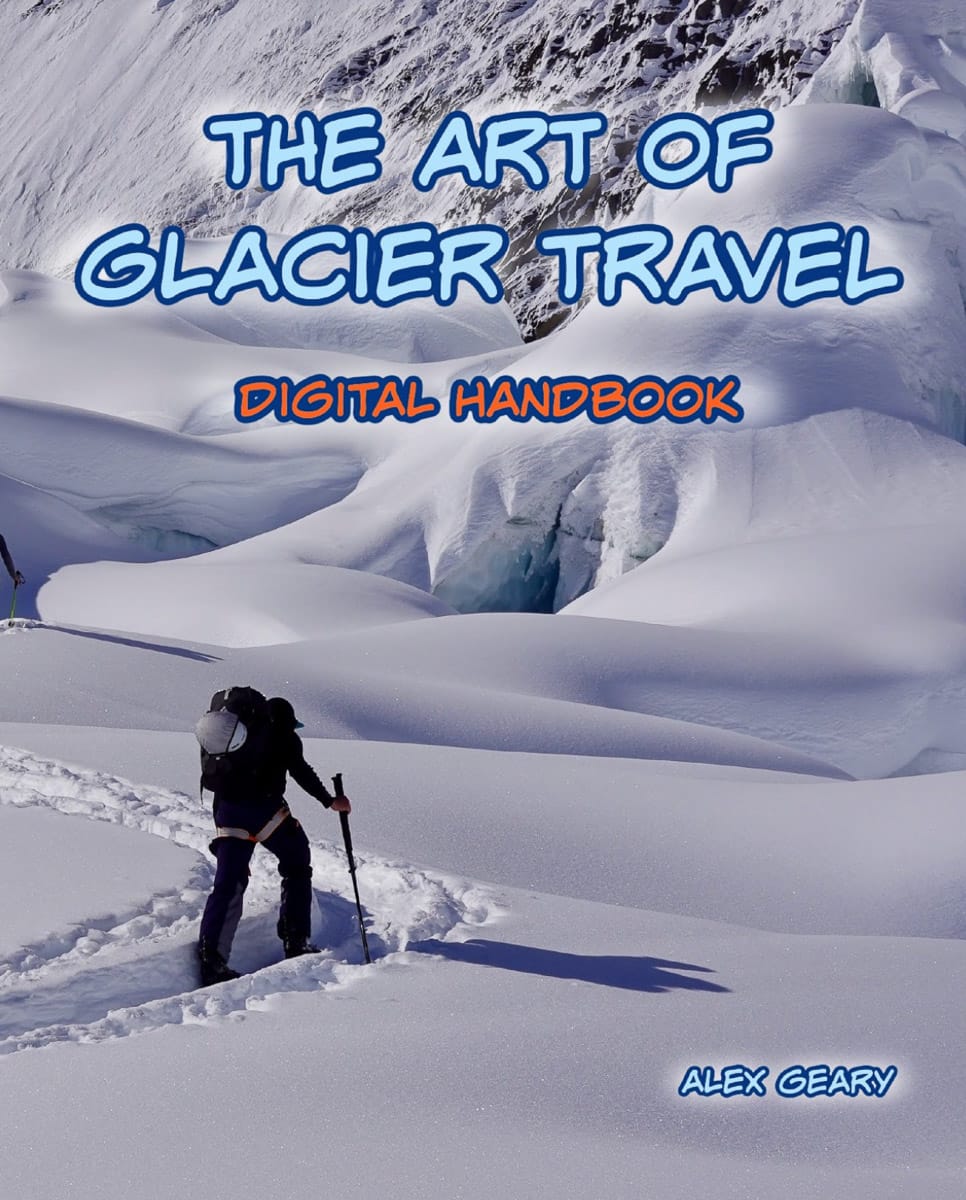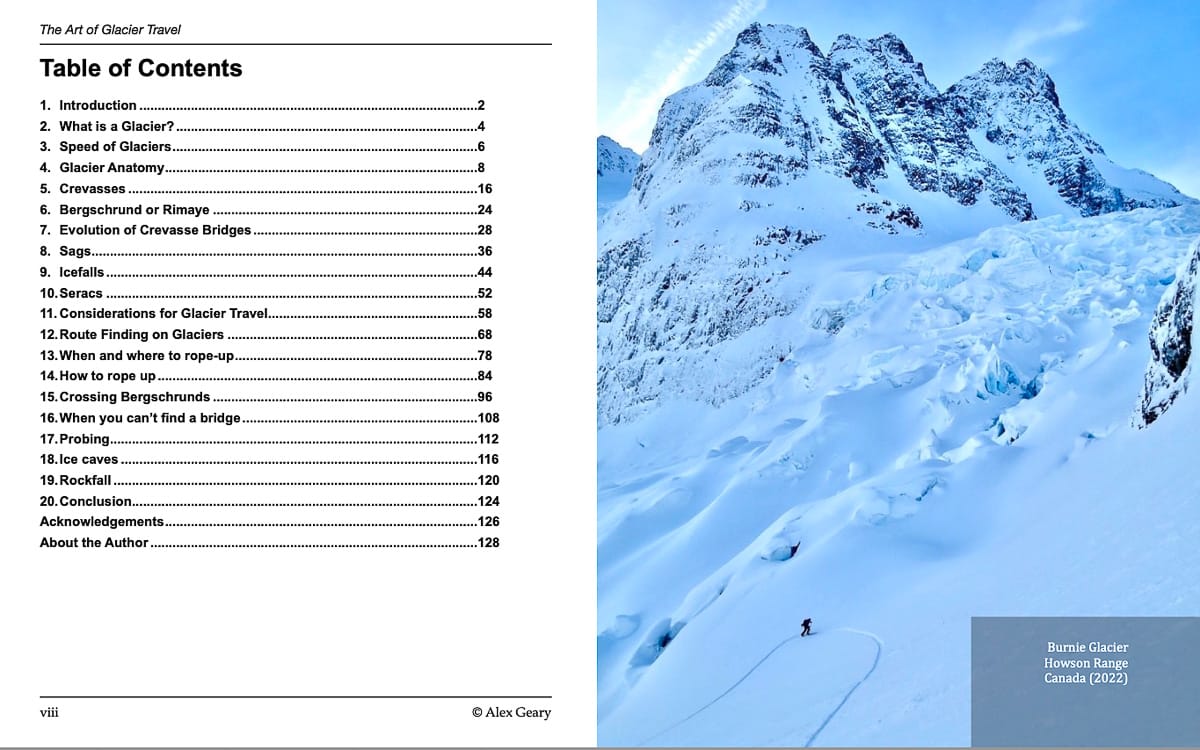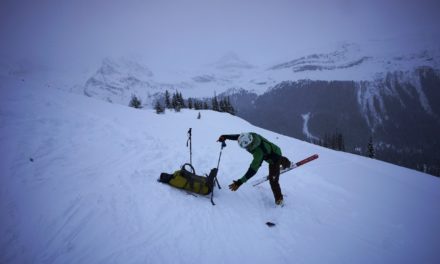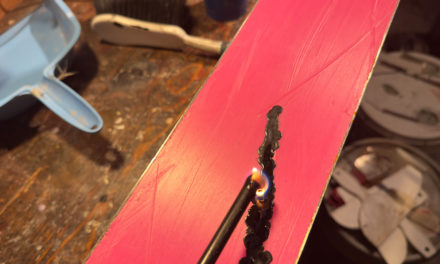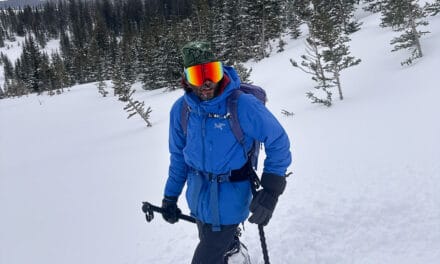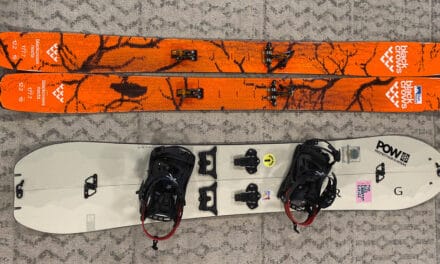For The High Route readers, let’s assume at some point, a glacier is in your future. If that is the case, experience and education (not necessarily in that order) are key. Alex Geary’s The Art of Glacier Travel Handbook provides a jumpstart for glacier first timers.
We are certain of this: there’s a lifetime of information about mountain travel how-tos and best practices. And in the scroll-through world, in which there are certainly educational nuggets, those nuggets are too dispersed, too disaggregated to do much good in the long term.
If you are like me, someone who likes to reference how-tos and what-not-to-dos repeatedly, having vital information collected and curated in one place is highly desirable. Alex Geary is a Canada-based IFMGA guide who is no stranger to organizing and writing excellent books on mountaincraft. His The Art of Up-tracking Handbook provides a one-stop place for learning about setting skintracks and its nuances. That handbook is in its fourth edition. This fall, Geary followed up with his new glacier-focused, The Art of Glacier Travel Handbook.
Geary knows and makes this point several times: using the handbook with no actual practice and exposure to glaciers is a non-starter. For beginners, the glacier-focused handbook will create a solid knowledge base and opportunities to learn proper terminology. There is no substitute for reading something like this handbook, tapping into other educational resources, and traveling in the appropriate glaciated terrain to marry knowledge with practice. (This may include enrolling in a formal glacier travel course.) For those who have spent ample time in glaciated terrain, Geary’s handbook may provide another perspective on what to look at and be aware of regarding glaciers.
The book runs about 130 pages and pairs clear explanations with diagrams and photos when appropriate. There isinformation about glacier anatomy, crevasses, crossing bridges, and how to rope up. This is not, however, an exhaustive list of topics covered (and covered well). The table of contents is expansive. Yet, Geary, in my opinion, keeps the focus tight—the handbook is all about remaining at the glacier surface, in other words, not in a crevasse. As such, he does not cover rescue techniques like deploying a 3:1 haul system or the type of gear each person should carry to assist with an extraction. As the forward claims, this handbook is all about “staying on top.”
Avoiding crevasses altogether is one thing. Navigating among and through them is both science and art. When considering glacier travel, crevasses and crevasse avoidance are often front and center. Geary does an excellent job discussing how to avoid crevasses in a section titled “Evolution of Crevasse Bridges.” A stable bridge is most often the safest path forward. The evolution discussion includes information and anecdotes about mid to late winter crevasses and spring to summer characteristics.
The section following crevasse evolution dives into “sags”—literally areas of snow that are sagging due to several variables, the least of which is tenuous underlying support. The “sag” at the surface, a small to large depression in/around a crevasse, indicates potential instabilities. The sag section, in particular, offers solid explainers and visuals. Again, nothing is better than field experience (and guided experience if you are somewhat green) to better understand glacier dynamics, but the sections noted above will jump-start your understanding of best practices.
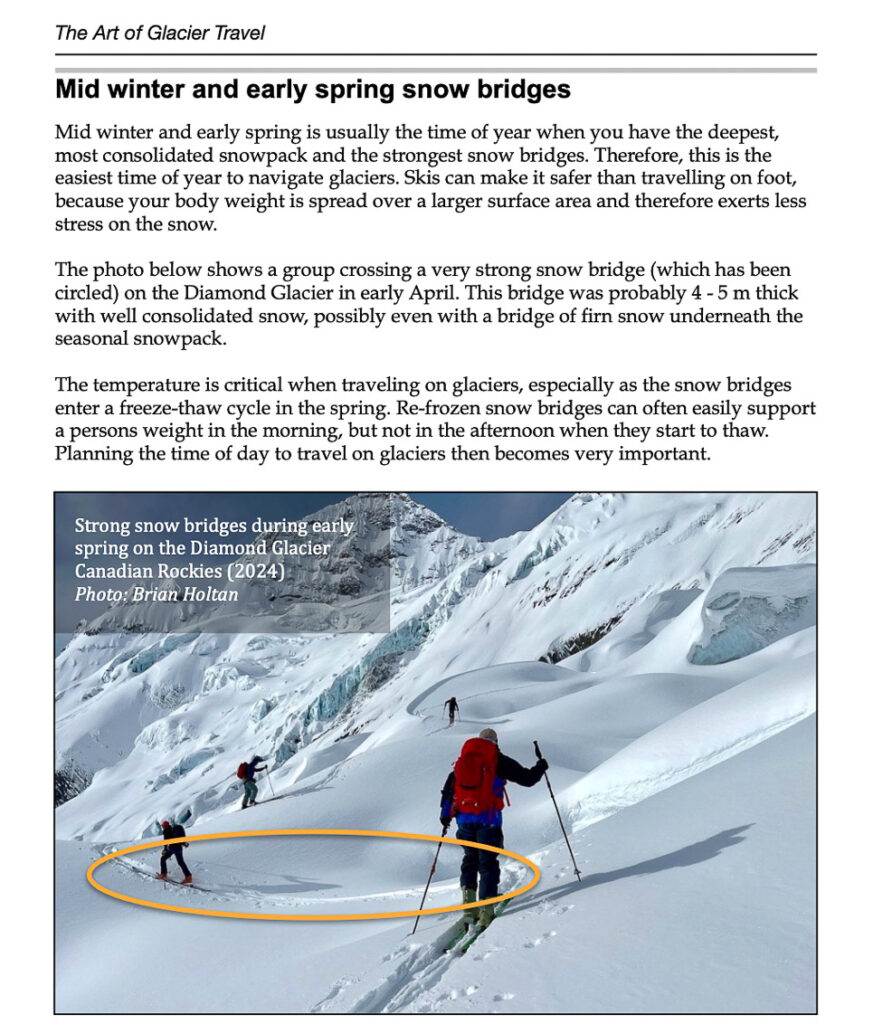
One of many standout sections, the information on snow bridges and sagging are quite informative. ©️Alex Geary
We do not encourage skimming. In particular when there is critical information to discern, as is the case with this handbook. That is noted, and for the skimmers out there (you know who you are), Geary concludes each section with key points. These are the primary takeaways.
Holistically, the handbook is easy to read, and the concepts are well presented. A scan through the table of contents reveals the wide scope of topics.
Those who prefer a physical copy of The Art of Glacier Travel Handbook can have it for $35.00 through Amazon. For readers keen on digital, Geary asks for a “choose your own price” model. Clicking the “Buy the Digital Handbook” option will direct you to PayPal, where you can proceed with the purchasing details. For those who pay for the digital copy, it is protected and cannot be printed.

